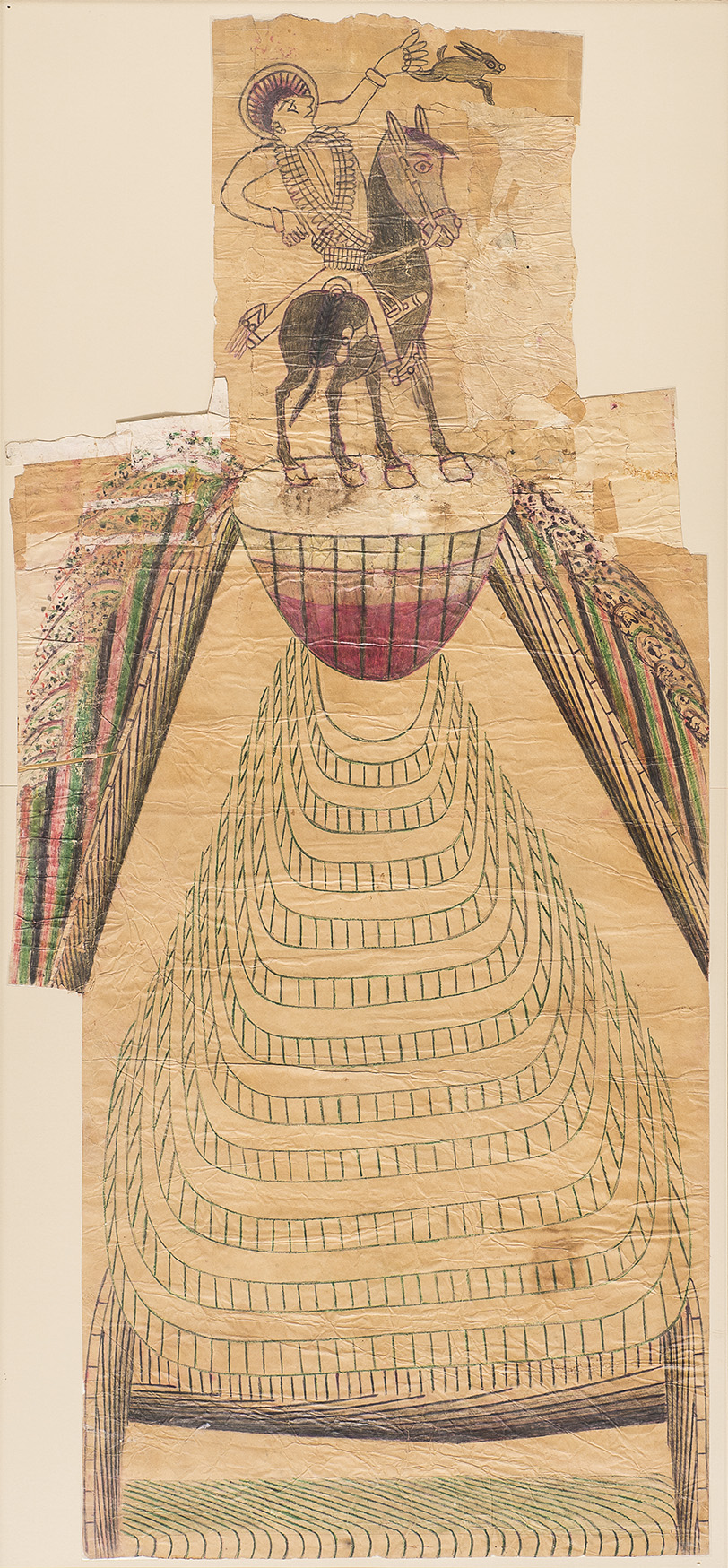Ramírez, Martín
Mexico, 1895 – 1963
Martin Ramirez was born in the Los Altos region of Jalisco. He moved to the United States in 1925 to work in railroad construction, and in 1929 was left unemployed after the stock market crash. Shortly after he was admitted to a psychiatric ward of DeWitt State Hospital in Sacramento (California), where Ramirez was one of the first patients in the United States to receive antibiotic treatment for tuberculosis. After being cured he started producing his most well-known large scale colourful drawings. Art had an almost amuletic function for Ramirez, who did not speak English and was scared of other patients. His drawings recall Los Altos and are inspired by folk Catholicism. Thematically, they can be separated into distinct categories: variations on representations of the Virgin Mary; depictions of wildlife and landscape; symbolic portrayal of borders, both cultural and physical; and hunting scenes. His art was first noticed by the doctor Tarmo Pasto. Interested in painting, Pasto carefully preserved Ramirez’s works until Jim Nutt, a Chicago imagist artist, discovered them in the 1970s.
